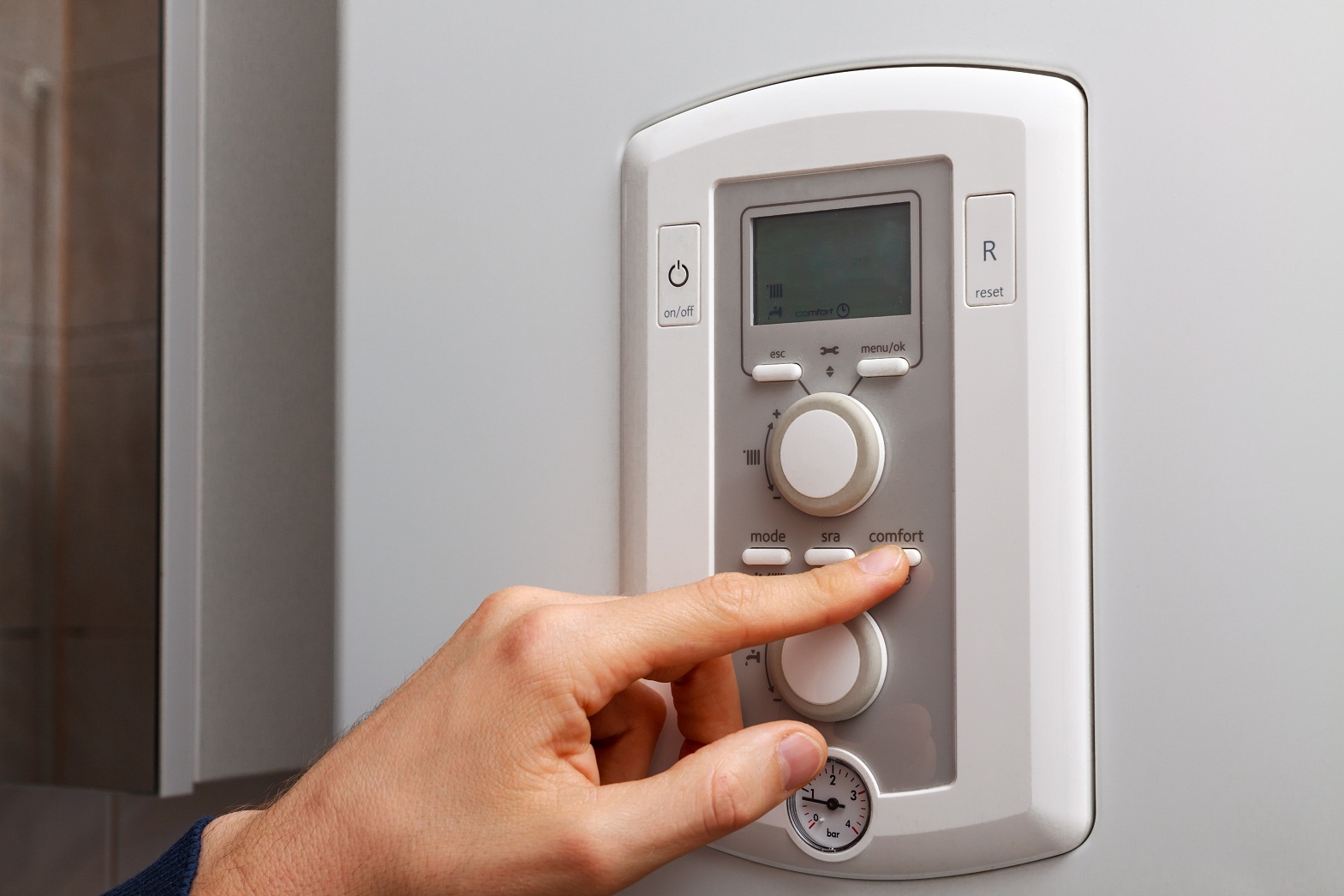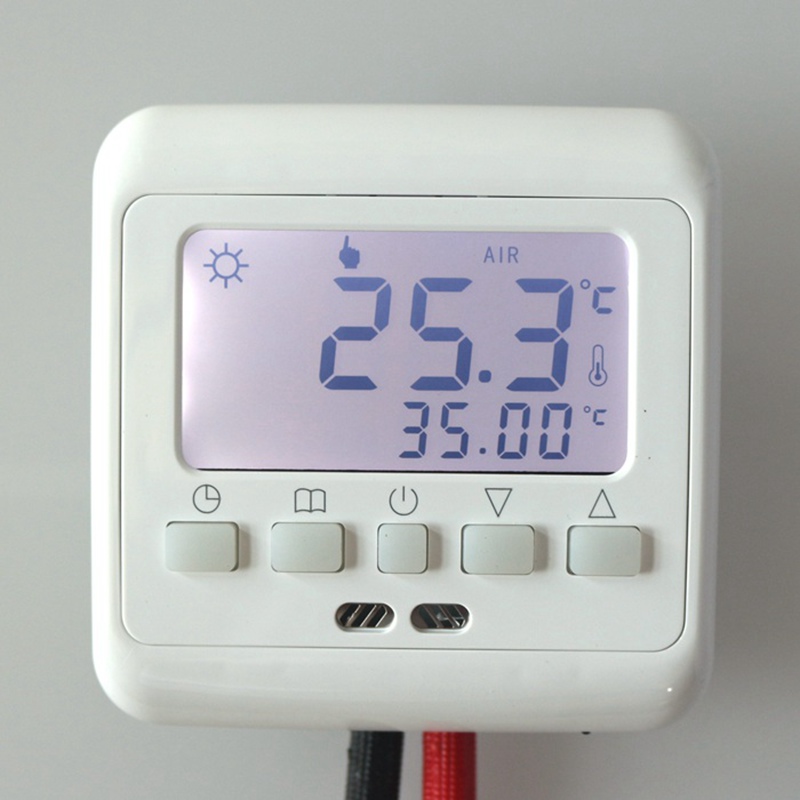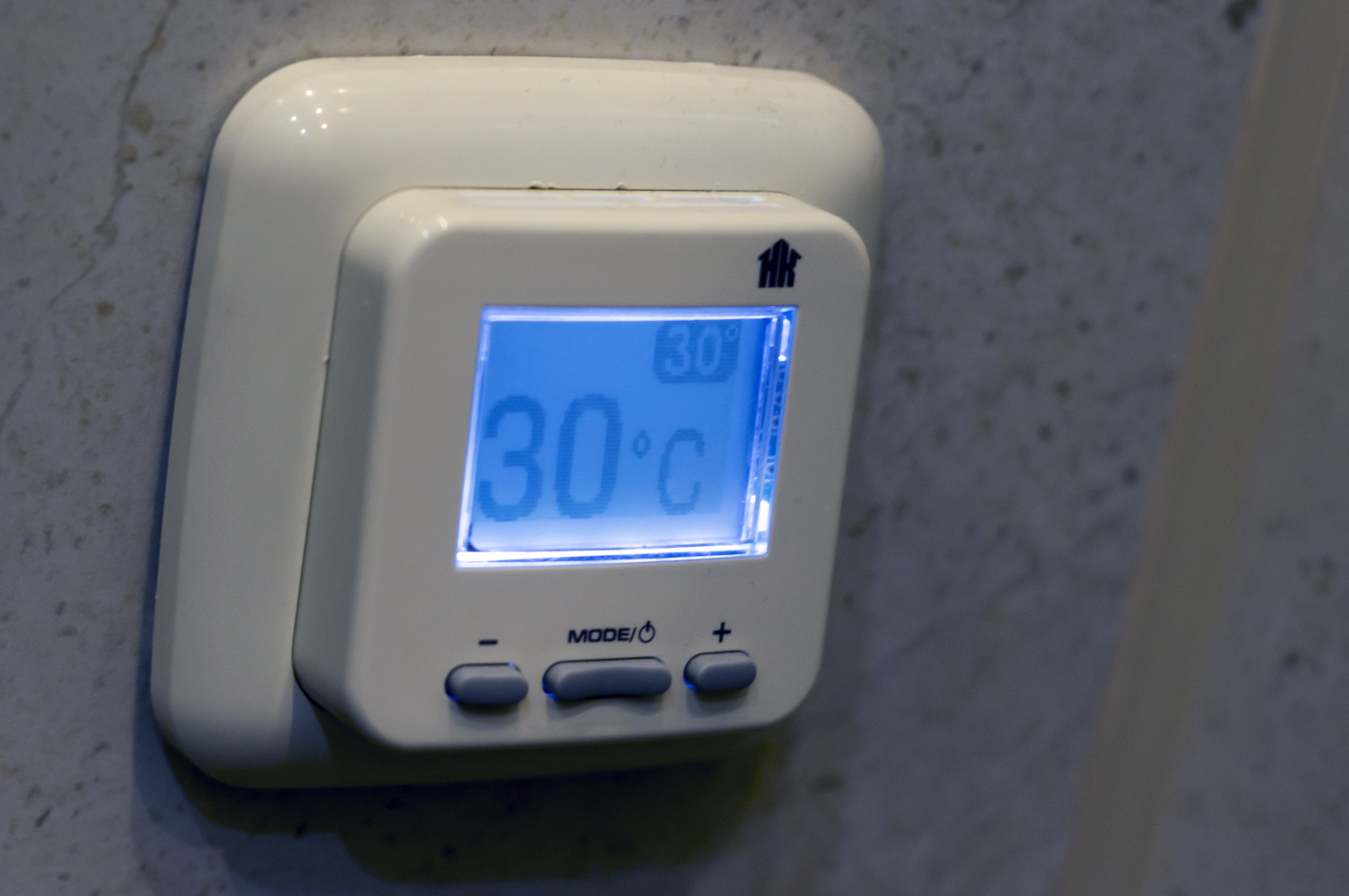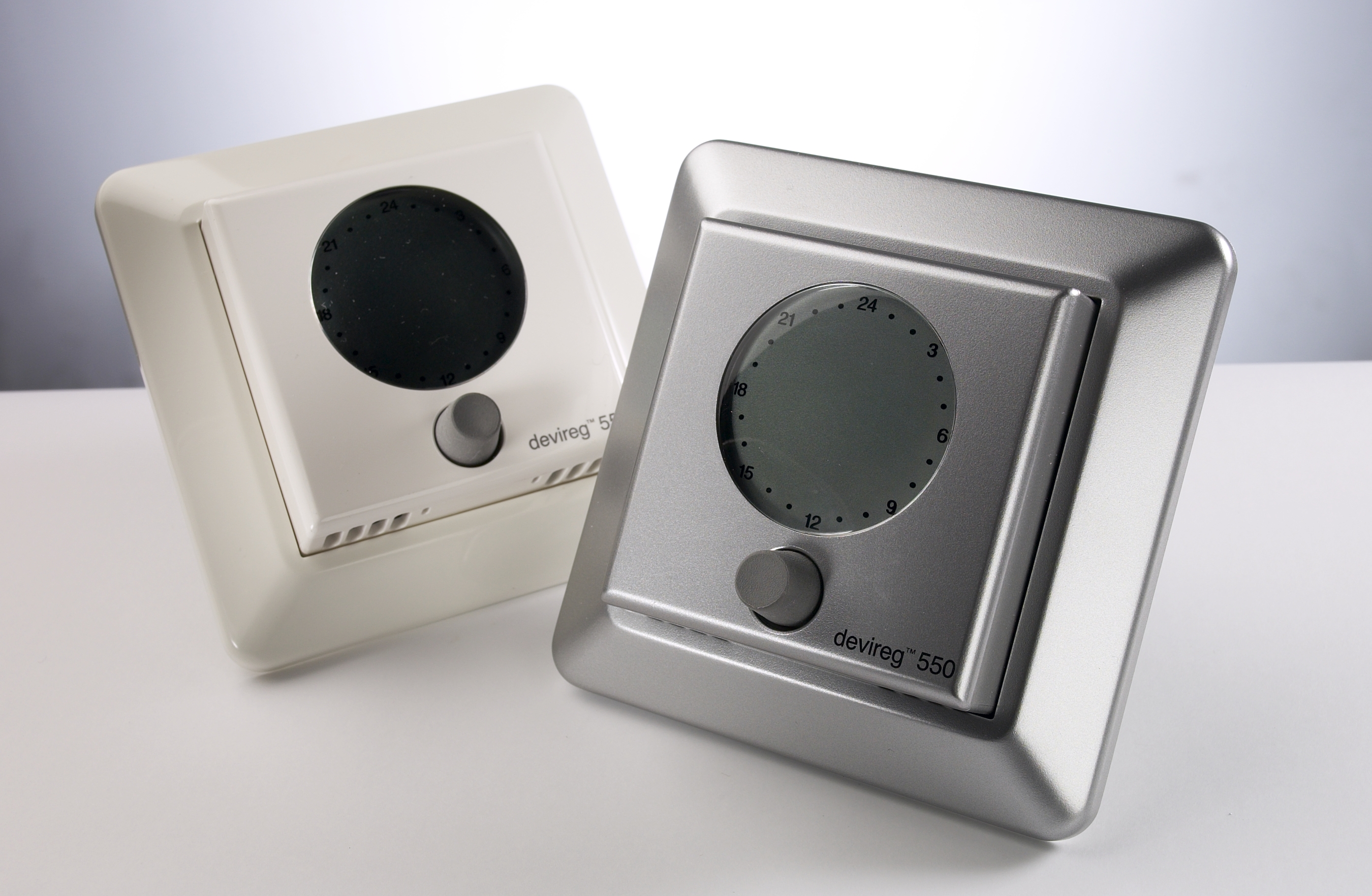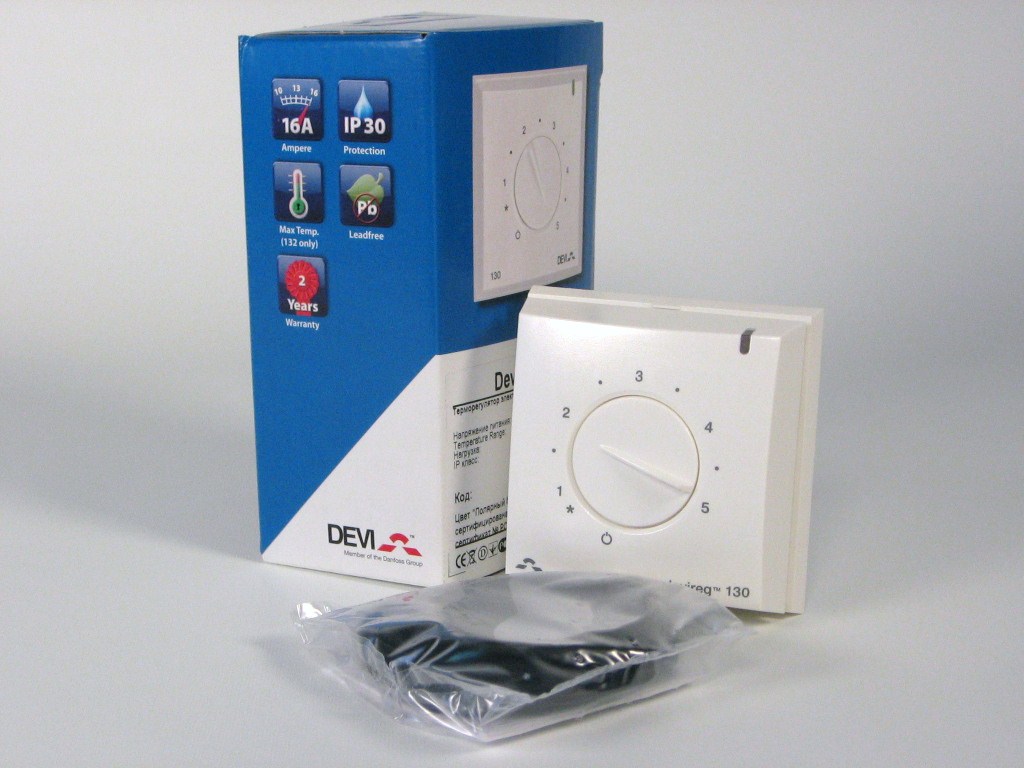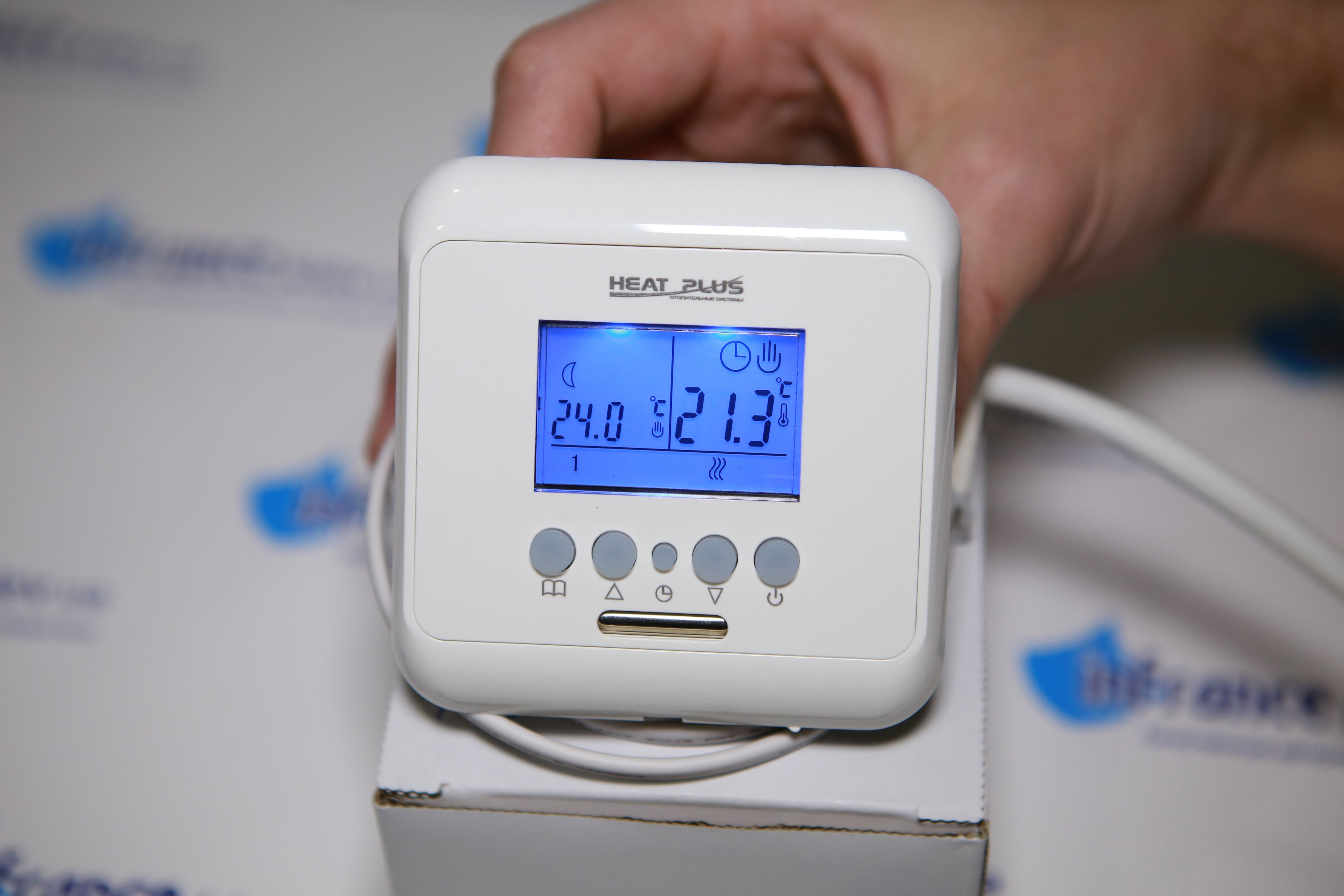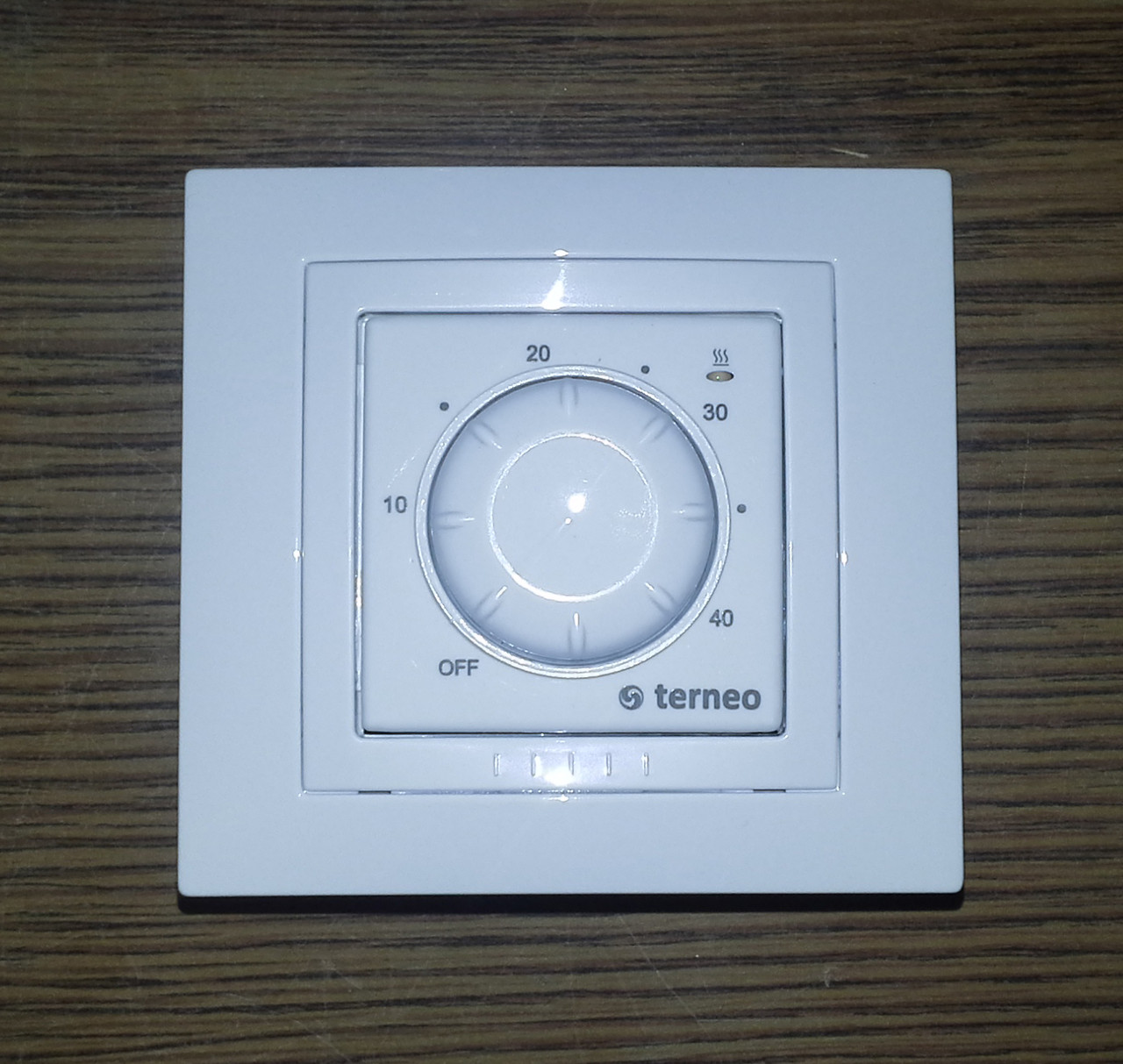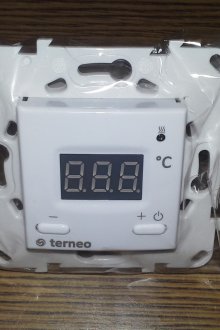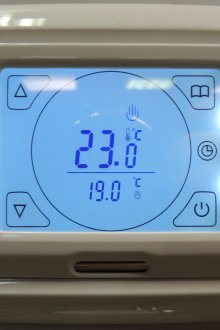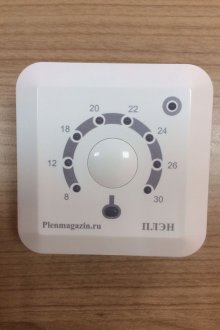What thermostat to choose for a warm floor?
Content
- 1 Varieties of temperature controllers
- 2 Mechanical thermostat for underfloor heating
- 3 Programmable thermostat for underfloor heating
- 4 Digital electronic thermostat
- 5 Temperature sensor - the main component of its regulation process
- 6 What sensors can a thermostat circuit use?
- 7 Installation of temperature controllers
- 8 Some tips for choosing thermostats
Whatever system the warm floor belongs to, it cannot be operated without a thermostat or, as it is often called, a thermostat. This device provides, if necessary, the inclusion of heating or shutdown to maintain the desired temperature in the room or the degree of heating of the floor itself.
The right choice of thermostat for a warm floor is always of great importance, because with this device, which is part of the heating system, the most optimal way to control energy consumption can be implemented, which allows you to maintain the desired microclimate in the room, and save financial costs.
In the modern market there are many different types of temperature controllers. They are simple and fairly cheap, and very complex for a "smart" home, equipped with artificial intelligence.
Varieties of temperature controllers
All specialists existing today thermostats are divided into three groups:
- mechanical;
- programmable;
- digital.
Mechanical thermostat for underfloor heating
Such a thermostat can be a simple mixing unit on a three-way valve, and be an electromechanical type device. In all cases, he always solves only one problem: maintains the temperature set on his rotary scale. Such a regulator is notable for its ease of operation and low price.
Using a three-way valve allows you to create a thermostat for a water heated floor, which directly regulates the flow of warm and cold water, mixes them and supplies the right temperature to the pipe system used to heat the floor, but such a thermostat for the floor can only be used if the house has a separate water heating system.
In most cases this is rare. Yes, and such a system for controlling the floor temperature is not always convenient, so when there is a desire to have a thermostat of a simple design, instead of three-way valves, electromechanical thermostats are most often used. In them, the required temperature is also set manually, but such mechanical thermostats control, unlike a three-way valve, not the flows of warm and cold water, but the voltage level on the heating elements.
Programmable thermostat for underfloor heating
Programmable thermostats, unlike the manual mechanical temperature regulators described above, can not only maintain, as the latter, the set temperature, but also program a change in its value during the day, or week, month, year. Moreover, the degree of floor heating can be different on weekdays and weekends or at night, in the morning, at noon and in the evening. The use of intelligent thermostats for underfloor heating, intended for use in “smart home” systems, can enable or disable floor heating also depending on whether there are people in the house and what temperature is outside the house.
For example, in the absence of owners in the house, a programmable thermostat can reduce the power directed to floor heating and, thereby, reduce electricity consumption. As experience shows, a programmable thermostat saves up to 50% of the energy used for heating, and normal - no more than 30%.In large areas, this effect will be especially noticeable.
Digital electronic thermostat
By its principle of operation, a digital thermostat is similar to a mechanical thermostat. The main difference from the latter is the presence of a digital display showing the floor temperature, set, in fact, also in manual mode. In this case, as a rule, it is not rotary rollers that are used, but buttons, the usual ones are used with a conventional digital thermostat, and the touch buttons are used with a touch temperature controller.
Temperature sensor - the main component of its regulation process
The temperature is maintained by a thermostat of any type, taking into account the signals generated by a sensor built into the thermostat or external to it.
A conventional thermostat, as a rule, is equipped with only one sensor that measures the temperature of the floor, but this option is not the best, since the “warm floor” system can be used even if there is additional heating of the room using, for example, water heating radiators and without them.
When the room is heated only with the help of a warm floor, it is better to control the air temperature in the room, and not the degree of floor heating.
If a laminate, parquet or linoleum sheets are used as flooring, then in this case it is necessary to measure the temperature of such a floor in order to avoid its overheating. The best option is thermostats, to which two sensors can be connected at once.
What sensors can a thermostat circuit use?
Thermostats of any system, regardless of whether they have a programming function or not, can be with a remote sensor or with an integrated sensor. The most common for temperature controllers are the following temperature control systems, taking into account the methods of connecting temperature sensors to them:
- with an overhead sensor designed for the floor, as well as a built-in sensor for monitoring air temperature;
- with a sensor that controls the temperature of the air, which can either be built into the thermostat housing or moved outside it;
- with infrared sensor for measuring floor temperature;
- with a temperature sensor mounted in a cover or laid on.
The most popular today are precisely the regulation systems of the last two types of the above options. They are cheaper than others, they work stably and are especially recommended for a film heat-insulated floor, which is most suitable for heating such a coating as:
- parquet;
- laminate;
- carpet;
- linoleum.
This is due to the fact that the film floor is characterized by a uniform distribution of heat over the surface of a carbon film emitting very low frequency IR rays, or as they say “far spectrum”.
The film infrared floor is characterized by another important feature, due to which it has an additional advantage over, for example, cable floor heating systems and others: easy, quick installation, accessible to almost everyone.
Installation of temperature controllers
To place these devices, mounting boxes are usually used, to which wires from the floor heater and signal cables from an external temperature sensor are connected. In addition, the entire system must be powered from the mains.
Thermostats should be installed in places where it is possible to provide convenient maintenance, reading and, if necessary, repair. If a large floor heating is used, it is necessary to conduct a separate line to ensure its power supply. In this case, it is better to mount the thermostat as close as possible to the electrical switchboard. If the power consumed by the underfloor heating is less than one kilowatt, then it can be powered even from a room outlet.
The temperature regulator is recommended to be placed as close as possible to the location of the warm floor at a level of 30-40 cm from its surface. This will reduce the length of cables coming from the temperature sensor.
Some thermostat models can be mounted in sockets or switches. It must be borne in mind that most thermostats cannot be used in rooms with high air humidity, but there are temperature controllers specially designed for installation in bathrooms. They have a moisture protection rating of IP21 or higher.
Some tips for choosing thermostats
- The digital and electromechanical temperature regulator is well suited for those who do not want to "bother" with programming, and the heating area is small.
- It is advisable to use a programmable thermostat, on the contrary, in the case when the area of the heated room is large. Then the energy savings will be significant.
- Thermoregulation using three-way valves is extremely simple, but only applicable if there is a separate water heating system.
- Since today there are a lot of thermostats of various types on sale in different colors, it is advisable that the temperature controller you choose is most suitable for the overall design of your interior if you cannot manage to hide the location of this device.
- When determining which is the best thermostat to purchase, consider first of all what maximum power it can regulate, what surges in the input voltage it can withstand, at what humidity it remains operational. It is better to choose a temperature control device with a good margin for all critical parameters.
- Pay attention to how and how easy it is to install the thermostat at the place of use.
- Ask who the manufacturer of this device is: it’s better to overpay for the products of a well-known company, whose high rating on the world market alone is a guarantee of quality, than to buy a cheap but unreliable product.
And in conclusion, we can say that not only the quality of its work, but also the quality of our life depends on how correctly we choose a thermal control system.
